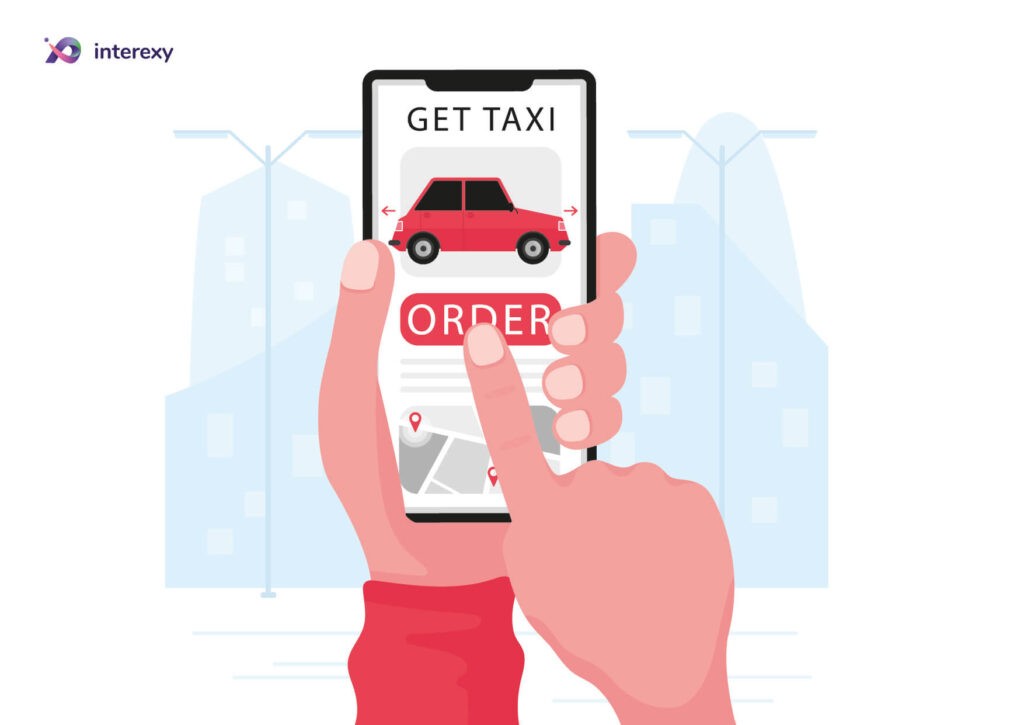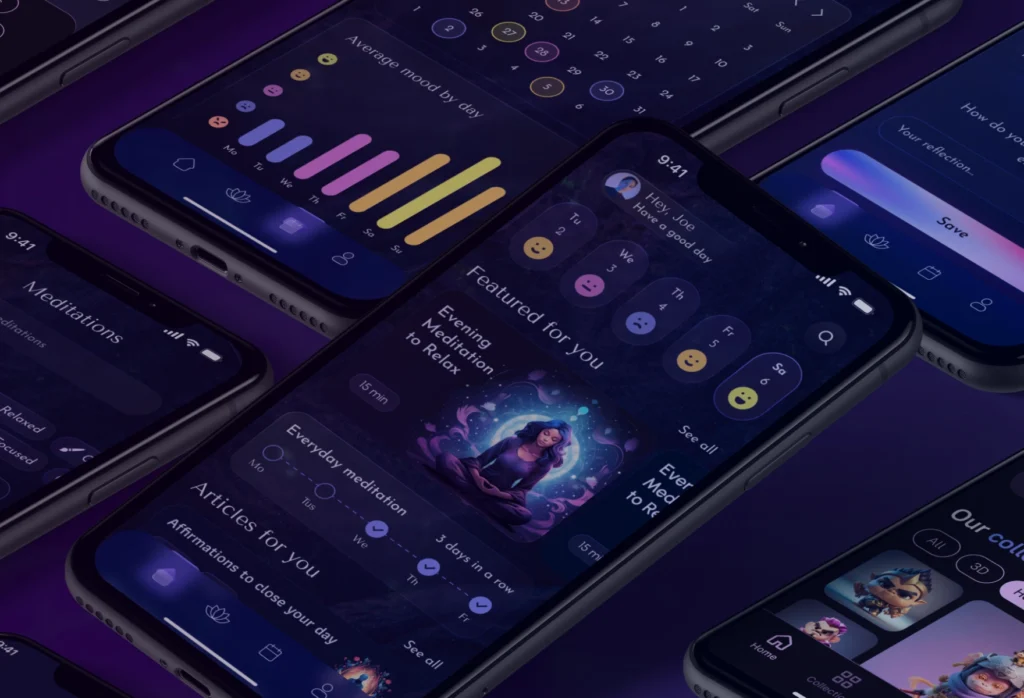January 17, 2022
How To Create A FinTech App That Will Make A Profit: Step-By-Step Guide by Interexy
Table of content
Whether you’ve been waiting for the most suitable time for investing in the FinTech industry or just starting your business, now is the best option to gain revenue. Due to COVID-19, the world goes digital. The market is fruitful and flourishing, waiting for any newcomers. Although it may seem the industry is full of various applications, there is a lot of space for anyone who wants to create a FinTech app.
Now people don’t want to spend half of their day in the bank’s queues. And the good news is that they do not need to. These applications contain all the features required to make users’ lives easier and hassle-free. Everything can now be performed within apps, and financial operations are not the exception. Therefore, people are paying for ultimate convenience. According to Market Data Forecast, “The Global Market is expected to grow gradually and reach $324 billion by 2026”.

With the new implementations in mobile banking app development, the working scenario has dramatically changed over the last few years. Technologies used in FinTech apps are regularly updated to adjust to new challenges and trends appearing in the industry and to satisfy customers’ needs.
We curated a step-by-step guide on how to develop a FinTech app using our practice-proven tips. We also explain the types of these platforms to help you gain more knowledge and identify what suits your goals best. So, let’s have a closer look at an easy development for your further success.
What is a FinTech App?
To put it simply, it is a term used to describe financial technology. It is applied by many industries today in financial services starting from users to businesses. This technology describes a company using software in the provision of financial services.
These applications are intended to connect the consumer’s finances with smart technologies. Therefore, they significantly improve access to finances by clients. From health insurance and investment brands to worldwide mobile payment platforms like Payoneer and PayPal, the financial technology reduces risk to banks.
The industry strives to reach 2 billion people worldwide who do not have banking accounts, and it offers a great opportunity for an immense number of clients that can easily manage their finances even without the need of traditional banks.
Reasons to Develop a FinTech App

1. Reduced Maintenance & Development Costs
One of the biggest benefits and reasons why startups want to build fintech products is pretty low costs on development and maintenance. It is a common practice that every line of code for other platforms can cause errors. This makes slow performance, bugs that have to be resolved, and, as a result, a higher cost due to updates.
Comparatively, developers build FinTech apps using various frameworks, allowing them to reuse the code for other software products. Therefore, it helps reduce the time needed for coding and gives developers a chance to focus on vital aspects like design, speed, security, and more.
2. Increased Audience Reach
Fintech app development is considered a mobile-first solution, meaning they help businesses reach a wider audience across devices such as smartphones and tablets. They are also highly convenient for users who want to always stay updated about their favorite brands and important news.
Since the mobile market is growing rapidly, the need to increase the number of customers and target a broad audience has never been more important. This is where these platforms not only allow companies to gain revenue but also help them stay more in demand.

3. Improved Functionality & Usability
Another key reason for FinTech application development is that they have been shown to provide high functionality and user-friendly interactions. Everyone has ever experienced applications that work slow and give a poor first impression.
However, FinTech software is built differently, so they do not give a chance for users to deal with such issues. They often have great functionality alongside usability while also providing unique features which improve business.
4. Customer Engagement & Boost Sales
FinTech applications have increased customer engagement and boosted sales. Since all companies want to launch their apps and quickly gain traffic, the technology gives a great chance to start immediately and grow your business from the very first days.
6. Higher Security
Every company wants to ensure its sensitive data is protected. However, the number of cyber-attacks only grows, and it is especially vital to understand financial apps. This is where FinTech applications show high security and reduce these issues to the full extent. Since developers apply the latest encryption technology when building apps, they are built to provide increased security for businesses and their clients. This guarantees safety, security, safety, speed and is considered more convenient than traditional online banking systems.

Types of FinTech Apps
1. Digital Banking
Regular financial institutions need to always adapt to the modern speed of life. A range of FinTech solutions has brought a great impact to the whole financial system, where digital banking is one of the most popular types of software.
For instance, the Atom Bank was a pioneer in the industry by getting official licensing. It is designed for mobile devices and provides users with many services associated with traditional banks. Services include savings, mortgages, and online payments.
2. Payment
The second type relates to money services. Probably one of the first prominent types of FinTech products today. Online payments have been quickly accepted by customers who want to make their life easier. It won’t be surprising to know that the e-commerce industry is said to make up 22% of all retail sales by 2023.
Online payments services are mainly used for online shopping. They allow customers to shop from their homes with no need to visit physical stores. Coronavirus also boosted the industry’s growth and benefited all these FinTech applications.
Although shopping is the most popular way to use online payments, users also use these technologies to pay their bills using mobile devices worldwide. This helps them easily perform all needed bank payments and manage their money without waiting for hours in the bank.
3. Trading and Cryptocurrency
Even though the stock market has always been popular and in demand, FinTech boosts its meaning in the money world. Thanks to the new types of services this technology provides, cryptocurrencies have gained immense popularity in recent years. These apps provide access to digital cryptocurrency markets and help customers to send and accept digital assets. This type of app is supported by Blockchain technology.
These platforms make the trading process even more accessible. This helps every user having an Internet connection to try their luck and improve skills in trading. Although some believe it is only for experts, beginners now can also satisfy their needs. Due to this accessibility, the stock market globally has increased in popularity.
4. Insurance and InsurTech
FinTech also made a great impact on the insurance market. The key factor is that customers always want a hassle-free, quick and effortless way of managing their insurance and contacting their provider. They also give users a chance to compare offers provided by other providers and all without leaving their homes. Fintech solutions provide client-based, flexible solutions for those requiring health or other types of insurance. This is how the new term “insureTech” has been added to the modern system.
Fintech trends & future functions
Augmented Reality & Virtual Reality (AR/VR)
AR and VR in financial technology are growing slowly every day. This is because people started investing in stocks or trade currencies using these technologies. Therefore, it may give a great chance to monitor real-time movements within the market and enter it at the right time. This is a great example of how users can use FinTech combined with modern technologies for their investments.

Smart Contracts
Although smart contracts are just entering the industry, they seem to provide numerous benefits, including higher security, boosted efficiency, transparency, and reduced cost. A startup that applied smart contracts, called Agrello, developed these technologies for enterprise clients, which performs once certain conditions are met.
Even though individuals usually associate smart contracts with blockchain, they come from a specific and unique category, as older examples were automated clearinghouses (ACHs) and central securities depositories (CSDs).
Voice-Enabled Payments
Voice-enabled payments sound like a crazy idea. But in reality, it allows people to use their phone’s voice recognition or a digital assistant like Google Assistant, Siri, or Amazon Alexa to know what their balance is right now and even perform payments and money transfers. Today, the idea is widely popular among startups that strive to implement proof of concept (POC) projects to bring voice-enabled payments to reality.
Steps of the development process
Step 1. Identify your niche and check legal guidelines
The first stage is identifying what FinTech area will be your focus. You can either enter the industry by developing an app that already exists but with higher functionality or create a unique platform by generating ideas.
When you are ready, you need to make sure the app you will be building will be legal and comply with requirements. Some of the most basic privacy laws are GDPR and CCPA, depending on where you live. You will need to perform research and find what guidelines you also have to follow.
Step 2. Craft a concept and feature set
This step is essential to find out how your product will overcome competitors. The first thing you have to do is market research and analysis. Understand your competition, your target audience, and what is popular among your potential users. We always advise you to hire experienced Business Analysts and Product Managers who will help you approach this critical step properly. When you’ve done, go further to create a shortlist of the minimum number of features.

Step 4. Choose the development approach
Since this step is quite hard to perform without help, you should consider hiring developers and Business Analysts who will take your project and find what tech stack and development approach suits your business needs best. You will also need to understand the price needed for all resources and identify timelines at this stage.
Step 5. Create MVP and try it in practice
An MVP (minimum viable product) version serves this purpose. It contains only basic features you want to add and help ensure that you will create an app that brings value to its users. It is also a great way to get users’ feedback and improve all bugs.

Step 6. Further Development, Releases, and Support
Once you’ve done the MVP and got the feedback, you can start developing and implementing everything you set. The next step is testing before launching the app, as you have to make sure it works properly. When the final product is released, you will need to update the product in time and support its proper working during the whole cycle.
Our Experience
Interexy is a renowned development company with deep expertise in over 16 spheres, where FinTech is one of the leading ones. We developed Axes – software that creates a fair and transparent market service that everybody can use. As more investors and traders use tablets or smartphones as their primary platform, there’s a big demand for simple trading systems with clear UI and low fees, which in turn attract more mobile users.
We developed a mobile iOS & Android application that allows users to perform trading operations on the financial market. The user receives the ability to create personal watchlists, track market news, make funds into personal deposits, buy and sell stocks, track personal buying power, portfolio balance statement, account health. Besides, it offers the possibility to make recurrent investments so that users can make permanent investments.
Consult our experts to get you a full team of high-skilled professionals and focus on more vital things!
Conclusion
As you can now see, the FinTech industry is booming, and every company investing in this area can grow revenue. There are several types of apps you can consider, and we provide you with a complete guide on how to develop these products. If you want to enter this space successfully, remember to create something new to overcome competitors, make an engaging design as it plays a role, and ensure the software complies with legal requirements. Whether you need a flutter FinTech app or you have any other idea, we are ready to take your idea and bring it to reality!
FAQs
What are Fintech Apps?
These applications allow users to perform payments online, send money, make various transactions and even shop without leaving their house. These products eliminate the need in traditional banks and help users manage their finances easily and effortlessly.
What are Trends in Fintech Apps?
Today’s financial startups and large companies prefer to boost their software with machine learning technologies, blockchain, AR & VR, and sometimes they use smart contracts.
How Much Does FinTech App Development Cost?
There is no correct answer as it hugely depends on the app’s complexity, whether you are going to hire an entire team or just developers one by one, and many other factors. But if we consider that you will hire a company and medium complexity of the app, the price usually starts from $50.000.














